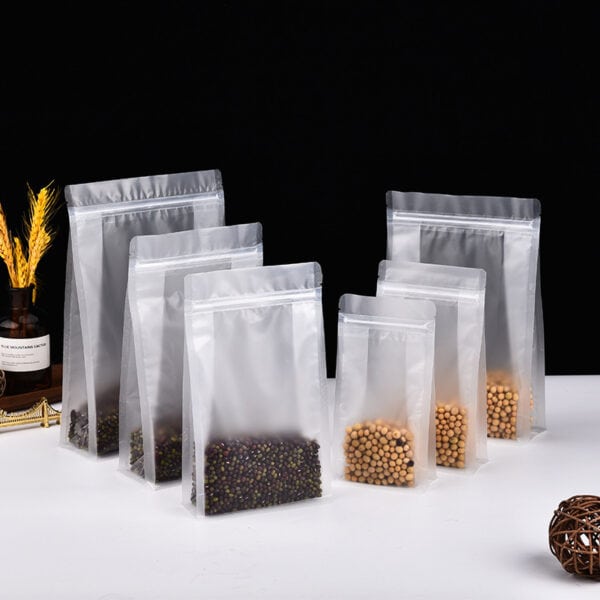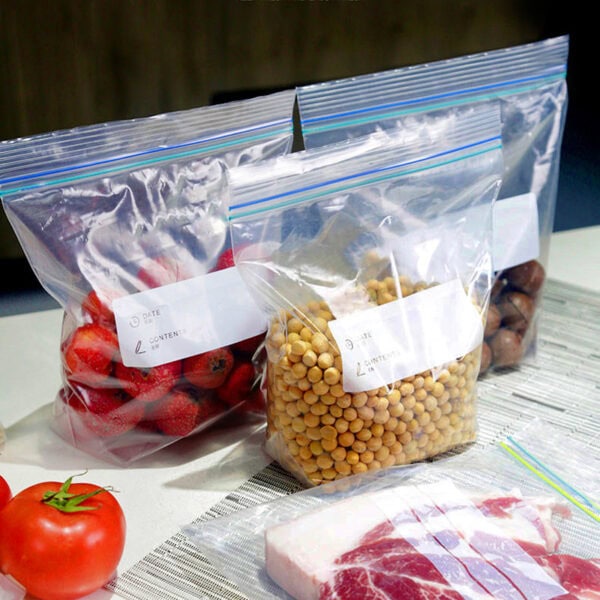Product packaging is essential for preserving food quality, safety, and shelf life. Choosing the wrong packaging materials can lead to wasted product, dissatisfied customers, and loss of sales. Selecting the right food packaging bag can help maintain your product’s integrity and ensure customer satisfaction.
Choosing the best food packaging bag for your product requires considering its material durability, barrier properties, cost-efficiency, sustainability, and compatibility with the food type. Balancing these factors helps protect food, extend shelf life, and attract customers.
Selecting packaging that aligns with your product needs, regulatory standards, and customer expectations can enhance your product’s success and brand value.

Understand Your Product’s Needs
Every food product has unique requirements for maintaining freshness, taste, and appearance. Certain foods need moisture barriers, others require UV protection, and some need special handling features for safety and convenience.
Identify the specific protection needs of your product, such as protection from moisture, light, or temperature fluctuations, and select packaging that aligns with those needs.
Understanding your product’s storage and protection needs is critical to ensure its freshness and appeal, especially for sensitive foods. For example, products prone to drying out may benefit from materials that retain moisture, while others may require vacuum-sealed bags, compatible with a vacuum packaging machine to eliminate air.
Identify Barrier Properties Required
Barrier properties determine how well packaging materials protect food from oxygen, moisture, and other contaminants. Selecting packaging with proper barriers ensures extended shelf life and product integrity.
Foods like meat, dairy, and snacks often require high-barrier films, foil linings, or multi-layered packaging to protect against spoilage and extend freshness.
Barrier strength should be matched with product needs. Meat products and dairy items generally need high-barrier films, while dry foods may require moderate protection. High-barrier packaging combined with a shrink wrap machine can help protect sensitive products during transport and storage.
Consider the Shelf Life and Product Stability
The stability and shelf life of food products vary, making it crucial to align packaging type with product requirements. Fresh, perishable items need air-tight packaging, while shelf-stable products can use simpler solutions.
Shorter shelf-life items benefit from multi-layered, advanced packaging, whereas long-lasting products may only require basic protective layers.
Perishable products, such as dairy and deli meats, need durable, multi-layered packaging to prevent spoilage. For example, high-barrier packaging, paired with a bottle labeling machine for branded presentation, is ideal for products that rely on long-term freshness.

Evaluate Packaging Material Options
Packaging options range from plastics and papers to foils and biodegradable materials. Each has unique benefits and downsides in terms of environmental impact, durability, and cost.
Balance your choice between materials that provide strong barriers and those that appeal to customers in terms of sustainability and aesthetics.
Choosing the right material depends on your product’s characteristics. Plastic and foil are durable but may have environmental drawbacks, while compostable materials are more eco-friendly. Finding a material that balances cost-effectiveness, durability, and consumer appeal is essential.
Ensure Compliance with Safety and Regulatory Standards
Food packaging must comply with health and safety regulations to prevent contamination and ensure consumer safety. Compliant materials often have food-safe certifications, are BPA-free, and follow strict standards for food contact.
Verify compliance with local and international safety regulations to ensure customer safety and avoid costly penalties or recalls.
Packaging should meet regulatory standards to avoid contamination and potential recalls. Choosing food-safe materials and labeling your products with a label printer ensures adherence to industry standards.
Prioritize Sustainable and Eco-Friendly Options
Sustainability in packaging is increasingly important to consumers. Brands that offer recyclable, compostable, or biodegradable packaging can appeal to eco-conscious shoppers and reduce their environmental impact.
Research renewable and biodegradable packaging solutions that maintain product quality, and consider their compatibility with your brand’s sustainability goals.
Eco-friendly options, such as compostable or recyclable packaging, reduce the environmental footprint. For instance, biodegradable plastic or paper pouches appeal to consumers who value sustainable practices.

Optimize Packaging for Branding and Visual Appeal
Packaging plays a significant role in attracting customers and building brand recognition. Design elements such as custom graphics, clear product windows, and brand logos make products stand out on the shelf.
Design visually appealing, clear, and informative packaging that captures attention and reflects your brand’s identity.
Effective packaging conveys essential information clearly while enhancing visual appeal. Branding elements combined with user-friendly labeling from a flat labeling machine help create a cohesive and appealing look that captures attention and boosts sales.
Factor in Packaging Functionality and Convenience
Packaging with user-friendly features, like resealable closures, easy-open tabs, or single-serve portions, enhances convenience and boosts customer satisfaction. These functional elements are essential for busy consumers looking for easy-to-use products.
Functional packaging increases convenience and ensures a positive customer experience, often making customers more likely to repurchase.
Convenience factors, such as zippered pouches or resealable closures, provide added value for consumers. Packaging with functional features not only protects the product but also enhances usability.
Assess Cost-Efficiency and Budget Compatibility
Balancing quality packaging with cost-effectiveness is crucial for maintaining profitability. Consider bulk orders to reduce unit costs or opting for versatile materials that can protect a range of products.
Select packaging that meets durability and protection standards without compromising budget constraints, and explore bulk ordering to manage expenses.
Cost-effective packaging solutions provide ample protection while staying within budget. Durable yet affordable materials help achieve the ideal balance between product protection and expense management.
![]()
Perform Consumer Testing and Gather Feedback
Conducting consumer tests and gathering feedback helps gauge how customers respond to packaging, influencing their perceptions and purchase behavior. This feedback allows you to make adjustments to packaging based on real customer experiences.
Use focus groups or surveys to gather consumer insights and fine-tune packaging for optimal performance and appeal.
Consumer testing highlights the strengths and weaknesses of packaging choices, providing insights into potential improvements. Listening to feedback helps ensure that packaging meets market expectations, leading to higher satisfaction and loyalty.
Conclusion
Choosing the right food packaging requires balancing material quality, functionality, cost, and branding appeal. Thoughtful packaging choices lead to improved product safety, shelf life, and customer satisfaction.









